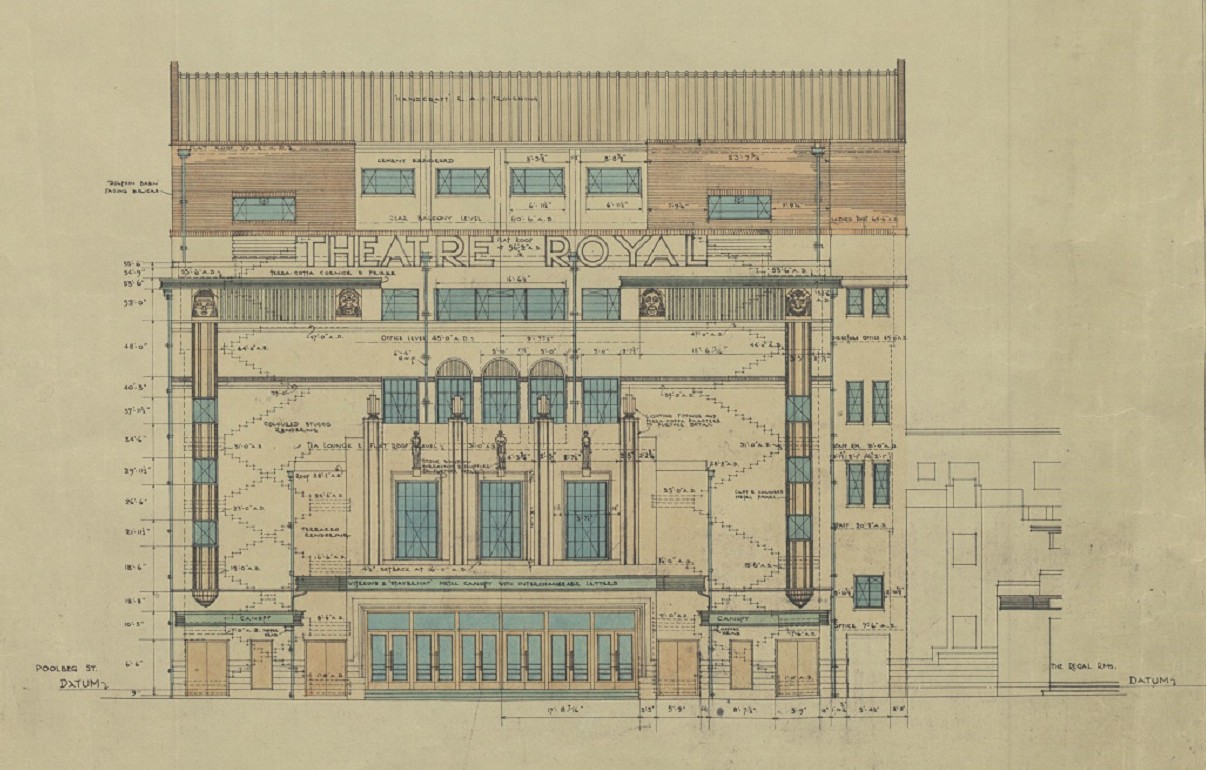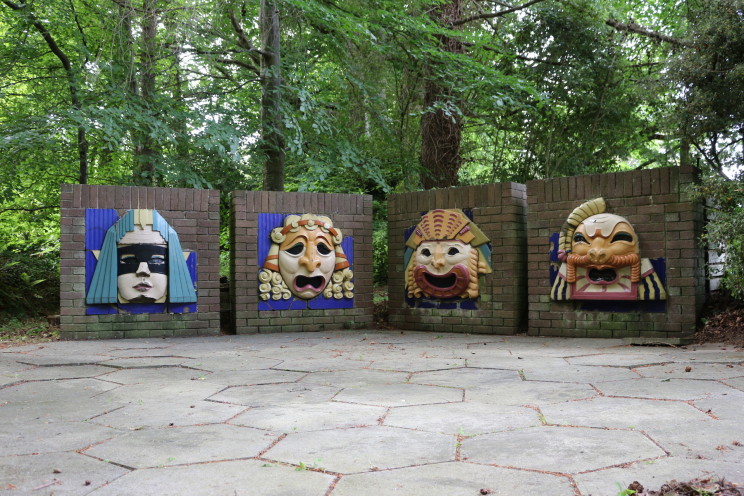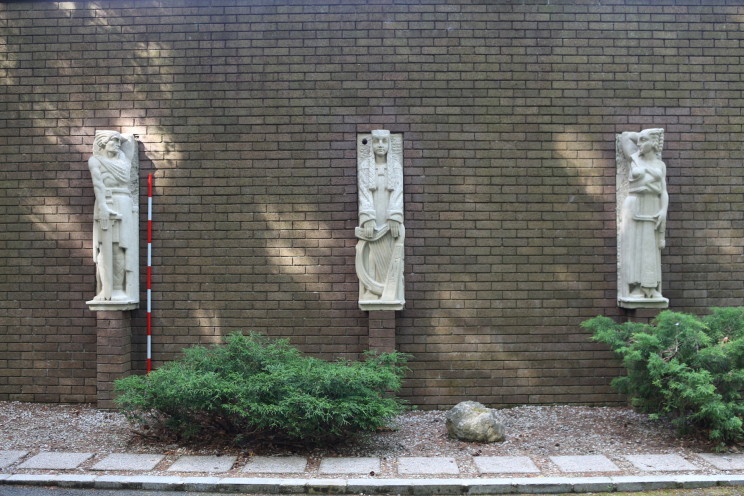Digitally Capturing Theatre Royal Art
By Freya Clare Smith (2015)

The enchanting sculptures of Ireland, a Celtic Muse and a Celtic Warrior carved from portland stone by the Irish artist, Laurence Campbell (pictured to the left), and four large colourful theatrical masks (Comedy, Drama, Burlesque and Tragedy), which originally adorned the facade of the 1935 Theatre Royal, miraculously have survived the sands of time.
An enigmatic reference noted in the Irish Architectural Archive provided one of the first clues to their survival. This together with a reference in an article by Anthony Symondson,[1] which mentioned that when the theatre had been raised to the ground in 1962 the sculptures had been procured by the architect Richard Guy who had subsequently placed them on the facade of his house; as well as the discovery of additional details and a beautiful photograph of the three statues in Volume III[2] of the recently published Art and Architecture of Ireland series; but above all, the kind assistance of this volume’s editor, Dr. Paula Murphy, led on a delightful path of discovery.
Fortuitously, we were able to meet their current owner, learn about their story and take a look at these playful compositions in their new setting. One idea being toyed with during this was wouldn’t it be great if they could be digitally captured to create 3D models, which could then be brought into the newly emerging visualisation of the 1935 Theatre Royal, as well as creating ‘virtual’ access to these pieces and thus bringing them to a wider audience.
We were met with the warmest hospitality by the current owner who was also amenable to this idea. And so (after devising a methodology – see below), over the following weeks, within the beautiful setting of a large scent-filled wooded garden that stirred the senses even without the artwork, I spent some time, with the greatly appreciated assistance of Hugh, methodically photographing the statues and masks and together creatively developing site-specific solutions to photographic constraints, whilst periodically being served with yummy refreshments by our lovely host that invigorated us and set us up for the next round of photographs.
Some of the preliminary interactive 3D models created thus far can be seen below in the ‘Methodology’ section. Pictured directly underneath, the original arrangement of the statues and masks on the theatre’s facade can be seen in an elevation drawing of the facade dating to 1934. Beneath this, photographs show them as they are today.

Theatre Royal, Front Elevation (November 1934) showing position of the masks and the sculptures
(Photograph: © The National Archives of Ireland)

Theatrical masks as they are today; from left to right: Drama, Tragedy, Comedy, and Burlesque
(Photograph: Freya Clare Smith)

Laurence Campbell sculptures as they are today: Celtic Warrior (Left), Ireland (Central) & Celtic Muse (Right)
(Photograph: Freya Clare Smith)
Methodology: 3D photogrammetry models
The methodology that I devised for capturing the photographs to create the 3D models using photogrammetry was based on recommendations set out in the Agisoft Photoscan manual[3] (the software used to stitch the photographs together), as well as a number of other online resources relating to photogrammetry and digital photography techniques.[4]
It basically comprised taking three loops of photographs in an arc around the sculpture/mask; each loop being at a set height relative to the artwork (top, middle, bottom) and each photograph’s position within the loops being at the same set distance from the sculpture/mask, as well as being captured using exactly the same camera settings (focal length/aperture). The main capturing loop was the middle circuit, which comprised a total of twenty-five photographs. The bottom and top loops each comprised five photographs. This ensured that all areas of each sculpture/mask would be captured and that going forward the photographs could be efficiently and accurately stitched together within the software.
Image of photogrammetry process using Agisoft Photoscan software
To put this methodology into practice on-site, a measured grid was carefully laid out around each sculpture and mask to provide a horizontal positioning for each of the photographs and for the vertical positioning, the camera’s height was set and recorded. To maximize quality and facilitate camera positioning I used a camera mounted on a heavy-duty Manfrotto tripod to take the photographs.
On-site we encountered a few challenges that had to be factored into the methodology. These included spatial constraints around the sculptures and masks and obstacles in the camera’s path/line of vision, such as the foliage of low bushes, which needed to be accommodated for. Additionally, due to the height of the sculptures, a ladder was required to capture the middle and top loops, with the tripod placed on a stabilized and elevated board to reach the required height.
Image of photogrammetry process using Agisoft Photoscan software
Image of photogrammetry process using Agisoft Photoscan software
![]() Supported by the European Union’s 7th Framework Programme
Supported by the European Union’s 7th Framework Programme
